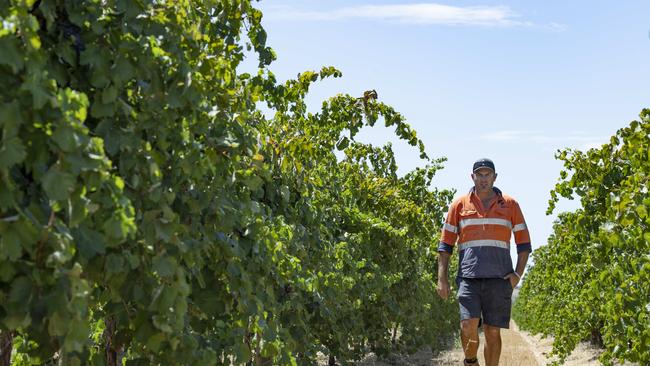Sunraysia growers dump wine grapes on to ground: China’s tariffs gut market
Sunraysia winegrape growers have started dumping shiraz vines on the ground, after failing to find a winery that will take them. See the videos.
Sunraysia winegrape growers have started dumping shiraz and other red varieties on the ground, after failing to find a winery that will take them.
Video footage emerged late yesterday of a Red Cliffs grower’s crop that he had dumped on the ground.
“I’ve done the first 10 acres and will do the other 10 today” the grower said, which equates to about 170 tonnes of grapes left to rot.
The loss is a direct result of China’s imposition of anti-dumping duties on Australian wine imports of 116 to 218 per cent in November 2020, which has gutted the $1.1 billion market for predominantly premium red varieties.
Even growers with contracts are getting the bare minimum of $330 to $360 a tonne for shiraz and cabernet grapes, while Merlot stagnates $300 to $330 a tonne.
Murray Valley Winegrowers Incorporated chief executive Paul Derrico said the prices on offer were half what growers were getting two years ago.
MVWI chairman Chris Dent said “as we expected it’s all coming to a head now that the reds are ripening or over ripen.
“There haven’t been any wineries active in the spot market.”
He said it was very difficult to determine just how many tonnes of grapes were being dumped on the ground.

Mr Dent warned the problem was exacerbated by wineries coming into this season “with pretty high stock levels, China’s tariffs and the global shipping crisis, (meaning) wineries not moving wine”.
“In the next 12 to 18 months there’s a lot of uncertainty, so no winery is looking to take a punt with an uptake in sales. We’re going into a bit of holding pattern.”
The Australian Grape and Wine industry group has previously warned the closure of the China market, freight shortages and a record 2.1 million tonne 2021 vintage had converged to create a concerning supply demand imbalance.
“Many wine producers are approaching vintage with significantly higher than normal inventories and full tanks,” the AGW reported.
“We are in a structural oversupply situation and will be for a couple of years until we get freight moving again, so there will be pressure on prices for growers for some time,” AGW chief executive Tony Battaglene said.
Mr Battaglene said of the roughly 120 million litres of Australian wine that was sold in China, one third has found a new market, leaving a lot of premium wine looking for a home.
He said growers without a contract for their crop wouldn’t be picking their grapes.
“There will be vineyards left to mothball. We’ll have a pretty tough 12-18 months,” he said.
Mitchell Taylor, chief executive of Clare Valley-based Taylors Wines – one of Australia’s largest privately owned wine groups – said he has heard of at least four growers who wouldn’t be picking their grapes this year, largely due to China’s anti-dumping tariffs.
Mr Taylor said one of his earliest memories was of his father taking a chainsaw to their shiraz and cabernet vines so they could be grafted with white varieties. “When I asked him what he was doing, he told me, ‘We’re not in the wine business, we’re in the fashion business,’” he said, alluding to the cyclical nature of the wine industry.
He said he had noticed double the number of vineyards up for sale, amid concerns within the industry about the viability of vineyards planted off the back of potential in the Chinese market.
However growers in the Riverina who are less exposed to the Chinese market have been hit with other challenges this season.
Riverina Winegrape Growers chief executive Jeremy Cass said unseasonably wet weather has brought with it disease pressure for growers, who were being offered about $350 a tonne for their reds, well down on prices over the past two years of around $600.
“Where we’ve had great losses isn’t because wineries haven’t wanted to take it, but because the disease level in the fruit has been so high,” he said.




